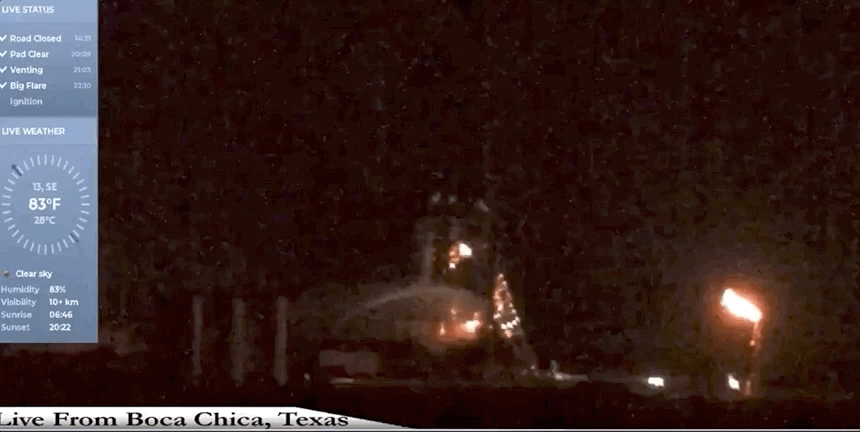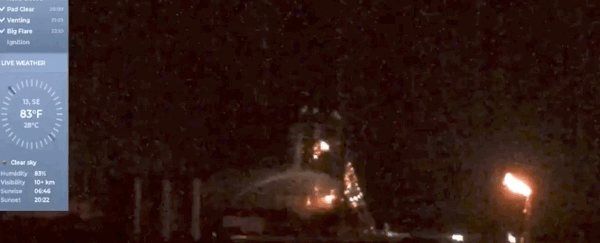SpaceX filled the South Texas air with the roar of a Raptor engine on Tuesday night. However, Elon Musk's rocket company also set off a fireball that briefly engulfed the rocket ship that the engine was attached to.
The rocket, called Starhopper, is a squat, six-story prototype of a larger interplanetary launch system known as Starship that's being designed to take people to and from Mars. That system (and its prototypes) will use a new rocket engine called Raptor.
Tuesday's test-firing was meant to set the stage for Starhopper's first big "hop and hover" launch, which was scheduled for Wednesday. But that launch has now been delayed.
"Aiming for hover test next week," Musk tweeted on Thursday afternoon.
The engine test-firing started at 11:24 p.m. ET (10:24 p.m. CT) on Tuesday and lasted about five seconds, throwing up a cloud of flames, dust, and fumes in the process. The test seemed to work aside from a couple of lingering flames.
But a few minutes later, a giant fireball erupted and briefly swallowed the vehicle.
A neighbour of SpaceX's rudimentary launch site, which is at the southern tip of Texas, recorded the incident during a live video feed (below).
 (Dave Mosher/Business Insider)
(Dave Mosher/Business Insider)
If you turn on the sound, you can hear one of the announcers say, "Oh my god, it caught fire."
The video shows a fire suppression system – essentially a robotic firehose – starting to douse Starhopper and its launch pad with a stream of water. The system was ostensibly used to put out some flames coming from the rocket's side.
But as soon as water touched the vehicle, the fireball erupted, shooting flames more than 100 feet into the air. (The vehicle is fuelled by liquid methane, a main ingredient in natural gas, and turns into a volatile and highly flammable gas when it's exposed to air.
Tim Dodd, who runs the Everyday Astronaut channel on YouTube, was also recording the event on-site. His video, shown below, captures both the test and fireball in ultra-high-resolution, slow-motion video.
Starhopper's first big launch has been pushed back
In the wake of the fireball, SpaceX has postponed the big launch of Starhopper until next week.
When the launch does happen, it's expected to send the rocket about 65 feet (20 meters) into the air, where the vehicle would hover, move sideways, and then land back on its launchpad, as Musk tweeted last week.
Starhopper is made of a rugged steel that's similar to the kind used in pots and pans. It was initially unclear whether the rocket had been significantly damaged by the incident, but Musk said on Thursday that methane fuel had somehow leaked out yet caused "no major damage."
"Big advantage of being made of high strength stainless steel: not bothered by a little heat!" Musk added.
People who visited the company's launch site the morning after the fireball posted detailed pictures of the vehicle, and the images appeared to show a relatively undamaged Starhopper.
The "hop" test now planned for next week won't be the vehicle's first lift-off. The company fired up Starhopper in April, but those tests tethered the rocket ship to the pad via bike-chain-like metal ropes on its legs.
The company may eventually launch Starhopper to a height of about 3.1 miles (5 kilometers), according to its government licence.
A spokesperson for SpaceX previously told Business Insider that the next Starhopper launch will be "one in a series of tests designed to push the limits of the vehicle as quickly as possible to learn all we can, as fast as we safely can."
They added (prophetically): "As with all development programs, the schedule can be quite dynamic and subject to change."
This story has updated with new information. It was originally published on July 17, 2019.
This article was originally published by Business Insider.
More from Business Insider:
